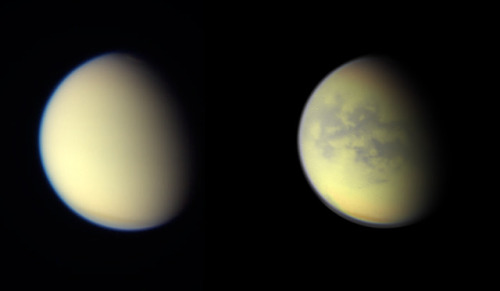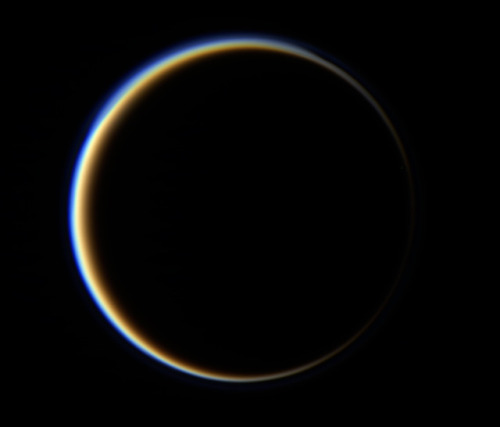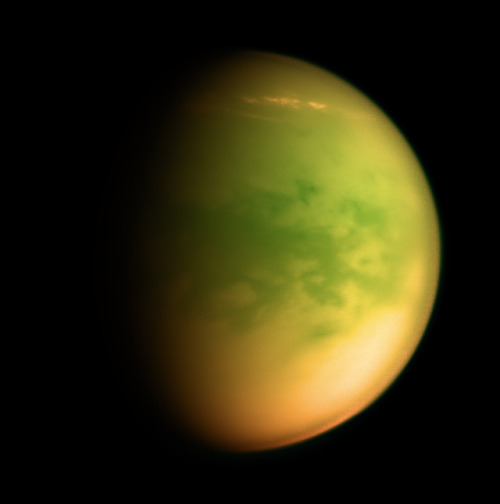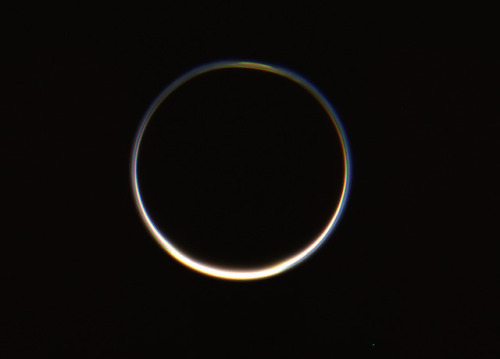Ten Interesting Facts About Mercury
Ten Interesting facts about Mercury
Mercury is the closest planet to the sun. As such, it circles the sun faster than all the other planets, which is why Romans named it after their swift-footed messenger god. He is the god of financial gain, commerce, eloquence, messages, communication (including divination), travelers, boundaries, luck, trickery and thieves; he also serves as the guide of souls to the underworld

Like Venus, Mercury orbits the Sun within Earth’s orbit as an inferior planet, and never exceeds 28° away from the Sun. When viewed from Earth, this proximity to the Sun means the planet can only be seen near the western or eastern horizon during the early evening or early morning. At this time it may appear as a bright star-like object, but is often far more difficult to observe than Venus. The planet telescopically displays the complete range of phases, similar to Venus and the Moon, as it moves in its inner orbit relative to Earth, which reoccurs over the so-called synodic period approximately every 116 days.

Mercury’s axis has the smallest tilt of any of the Solar System’s planets (about 1⁄30 degree). Its orbital eccentricity is the largest of all known planets in the Solar System; at perihelion, Mercury’s distance from the Sun is only about two-thirds (or 66%) of its distance at aphelion.

Its orbital period around the Sun of 87.97 days is the shortest of all the planets in the Solar System. A sidereal day (the period of rotation) lasts about 58.7 Earth days.

Mercury’s surface appears heavily cratered and is similar in appearance to the Moon’s, indicating that it has been geologically inactive for billions of years. Having almost no atmosphere to retain heat, it has surface temperatures that vary diurnally more than on any other planet in the Solar System, ranging from 100 K (−173 °C; −280 °F) at night to 700 K (427 °C; 800 °F) during the day across the equatorial regions. The polar regions are constantly below 180 K (−93 °C; −136 °F). The planet has no known natural satellites.

Unlike many other planets which “self-heal” through natural geological processes, the surface of Mercury is covered in craters. These are caused by numerous encounters with asteroids and comets. Most Mercurian craters are named after famous writers and artists. Any crater larger than 250 kilometres in diameter is referred to as a Basin.

The largest known crater is Caloris Basin, with a diameter of 1,550 km. The impact that created the Caloris Basin was so powerful that it caused lava eruptions and left a concentric ring over 2 km tall surrounding the impact crater.

Two spacecraft have visited Mercury: Mariner 10 flew by in 1974 and 1975; and MESSENGER, launched in 2004, orbited Mercury over 4,000 times in four years before exhausting its fuel and crashing into the planet’s surface on April 30, 2015.

It is the smallest planet in the Solar System, with an equatorial radius of 2,439.7 kilometres (1,516.0 mi). Mercury is also smaller—albeit more massive—than the largestnatural satellites in the Solar System, Ganymede and Titan.

As if Mercury isn’t small enough, it not only shrank in its past but is continuing to shrink today. The tiny planet is made up of a single continental plate over a cooling iron core. As the core cools, it solidifies, reducing the planet’s volume and causing it to shrink. The process crumpled the surface, creating lobe-shaped scarps or cliffs, some hundreds of miles long and soaring up to a mile high, as well as Mercury’s “Great Valley,” which at about 620 miles long, 250 miles wide and 2 miles deep (1,000 by 400 by 3.2 km) is larger than Arizona’s famous Grand Canyon and deeper than the Great Rift Valley in East Africa.

The first telescopic observations of Mercury were made by Galileo in the early 17th century. Although he observed phases when he looked at Venus, his telescope was not powerful enough to see the phases of Mercury.
source
source
source
images: Joseph Brimacombe, NASA/JPL, Wikimedia Commons
More Posts from Sharkspaceengine and Others

Picture of the day - November 20, 2018
Dark red nebula rises over a dim set of rings orbiting a gas giant.
Green World

Picture of the Day - October 29, 2018
Lush and green Earth-like planet with life and a large moon orbiting close by.
Staying on Tumblr for now.
I just want to let all my followers know I am staying on Tumblr for now. I appreciate everyone who follows my space engine tumblr and rabbit and shark tumblr.
I am going to however check into pillowfort since i am hearing some good things about it, and might also keep a space engine blog on there as well if I like it.
If the autoflagging gets too bad, however; I might decide to leave tumblr. So that is a wait and see game. But for the foreseeable future I am staying here.






Pictures of the day - November 26, 2018
A system of 6 planet’s orbiting a rare dim carbon star that has swelled into a red giant. All of the planet’s have been roasted by the star. The star has a very low surface temperature; therefore, all of the planets have a red-tint due to the lack of blue colored light.
The outer-most planets form a double planet system which consist of a Mars-like world orbited by an ocean world. The ocean world once being a frozen ice-covered world melted the by expanded sun.
Space Engine System ID: RS 5581-42-4-1201-1122
High Resolution Pictures:
Inner-most world
Massive giant covering the sky
Roasted Ice-giant and its moons
Another burnt world
Outer-most Double Planets
Hurricane
Evaporating Planets

Picture of the Day - October 27, 2018
These three planets (not comets) close to a white giant star losing their atmospheres. The giant star has expanded so fast that all of the inner planets are superheated to nearly 2,000 F.
Not space related, but wanted to see what my space engine followers thought of this question. Hoping to get some good memes out of it.
Shark Question
Are male sharks now going to be banned if their claspers are visible? Also are female sharks with scars on their face going to be banned since that can be considered sexual abuse by a male shark?







Oculus System - Post 1 (Introduction)
We are now inside the giant NGC 604 Nebula. I’ve come across this wide binary system consisting of a F4 giant that is almost 16 times brighter than Earth’s sun and a smaller, but still bright G0V type star more than twice the brightness of Sol. The first worlds I am exploring are the ones orbiting the smaller or secondary of the two stars.
Descriptions of the planet’s to follow in the next post.
Space Engine System ID: RS 1229-171-5-23517-58
High Resolution Pics
Picture 1 - Inner-most Planet
Picture 2 - Surface
Picture 3 - Warm Ice-Giant
Picture 4 - System's fourth planet from a satellite
Picture 5 - Double occultation of two moons
Picture 6 - World with Ethane Oceans
Picture 7 - Setting distant 2nd sun
Mars Express finds evidence of liquid water under Martian pole
A ground-penetrating radar aboard the European Space Agency’s Mars Express satellite has found evidence for a pool of liquid water, a potentially habitable environment, buried under layers of ice and dust at the red planet’s south pole.

“This subsurface anomaly on Mars has radar properties matching water or water-rich sediments,” said Roberto Orosei, principal investigator of the Mars Advanced Radar for Subsurface and Ionosphere Sounding instrument, or MARSIS, lead author of a paper in the journal Science describing the discovery.
The conclusion is based on observations of a relatively small area of Mars, but “it is an exciting prospect to think there could be more of these underground pockets of water elsewhere, yet to be discovered,” added Orosei.

Scientists have long theorised the presence of subsurface pools under the martian poles where the melting point of water could be decreased due to the weight of overlying layers of ice. The presence of salts in the Martian soil also would act to reduce the melting point and, perhaps, keep water liquid even at sub-freezing temperatures.
Earlier observations by MARSIS were inconclusive, but researchers developed new techniques to improve resolution and accuracy.

“We’d seen hints of interesting subsurface features for years but we couldn’t reproduce the result from orbit to orbit, because the sampling rates and resolution of our data was previously too low,” said Andrea Cicchetti, MARSIS operations manager.
“We had to come up with a new operating mode to bypass some onboard processing and trigger a higher sampling rate and thus improve the resolution of the footprint of our dataset. Now we see things that simply were not possible before.”
MARSIS works by firing penetrating radar beams at the surface of Mars and then measuring the strength of the signals as they are reflected back to the spacecraft.
The data indicating water came from a 200-kilometre-wide (124-mile-wide) area that shows the south polar region features multiple layers of ice and dust down to a depth of about 1.5 kilometres (0.9 miles). A particularly bright reflection below the layered deposits can be seen in a zone measuring about 20 kilometres (12 miles) across.

Orosei’s team interprets the bright reflection as the interface between overlying ice and a pool or pond of liquid water. The pool must be at least several centimetres thick for the MARSIS instrument to detect it.
“The long duration of Mars Express, and the exhausting effort made by the radar team to overcome many analytical challenges, enabled this much-awaited result, demonstrating that the mission and its payload still have a great science potential,” says Dmitri Titov, ESA’s Mars Express project scientist.

The discovery is significant because it raises the possibility, at least, of potentially habitable sub-surface environments.
“Some forms of microbial life are known to thrive in Earth’s subglacial environments, but could underground pockets of salty, sediment-rich liquid water on Mars also provide a suitable habitat, either now or in the past?” ESA asked in a statement. “Whether life has ever existed on Mars remains an open question.”
source










Images taken by the Cassini & Voyager spacecraft of Titan, Saturn’s largest moon. Titan is the only moon in the Solar System to have a thick atmosphere and lakes of hydrocarbons (methane and liquid ethane).
To know more about the moon Titan click here
Image credit: NASA/JPL/SSI/Cassini & Voyager ( precessed by: Kevin Gill )
Pillowfort reopens new user registrations at 10 am est
Pillowfort has finally reopened new user registrations which will begin at 10 am eastern. There is a small $5 fee until the site is no longer in beta. I have permanently switched all my posts over there. I’ll be posting a follow up post with my blog link later today
-
 krya00 liked this · 6 months ago
krya00 liked this · 6 months ago -
 thedoll liked this · 2 years ago
thedoll liked this · 2 years ago -
 neptune-orbits liked this · 2 years ago
neptune-orbits liked this · 2 years ago -
 poynter66 liked this · 2 years ago
poynter66 liked this · 2 years ago -
 motomamiblog liked this · 2 years ago
motomamiblog liked this · 2 years ago -
 ewigenschlaf788 liked this · 3 years ago
ewigenschlaf788 liked this · 3 years ago -
 announmmmmys liked this · 4 years ago
announmmmmys liked this · 4 years ago -
 manaalficient liked this · 4 years ago
manaalficient liked this · 4 years ago -
 fireball763 reblogged this · 4 years ago
fireball763 reblogged this · 4 years ago -
 fireball763 liked this · 4 years ago
fireball763 liked this · 4 years ago -
 canatrix liked this · 4 years ago
canatrix liked this · 4 years ago -
 driftinhome liked this · 4 years ago
driftinhome liked this · 4 years ago -
 beyazsokakkedisi liked this · 5 years ago
beyazsokakkedisi liked this · 5 years ago -
 malletboy337 liked this · 5 years ago
malletboy337 liked this · 5 years ago -
 heyyyitsmair liked this · 5 years ago
heyyyitsmair liked this · 5 years ago -
 dogsiskela liked this · 5 years ago
dogsiskela liked this · 5 years ago -
 ameliecameli liked this · 5 years ago
ameliecameli liked this · 5 years ago -
 maleee196-blog liked this · 5 years ago
maleee196-blog liked this · 5 years ago -
 dedalodeemociones1 reblogged this · 5 years ago
dedalodeemociones1 reblogged this · 5 years ago -
 luhverswift liked this · 5 years ago
luhverswift liked this · 5 years ago -
 92sbaby liked this · 5 years ago
92sbaby liked this · 5 years ago -
 tourharry reblogged this · 6 years ago
tourharry reblogged this · 6 years ago -
 quest4space reblogged this · 6 years ago
quest4space reblogged this · 6 years ago -
 shejustcalledmeafish liked this · 6 years ago
shejustcalledmeafish liked this · 6 years ago -
 sneaky-witch-thief reblogged this · 6 years ago
sneaky-witch-thief reblogged this · 6 years ago -
 bizertino liked this · 6 years ago
bizertino liked this · 6 years ago -
 ultimateuselesness reblogged this · 6 years ago
ultimateuselesness reblogged this · 6 years ago -
 ironfarmstudentdreamer-blog liked this · 6 years ago
ironfarmstudentdreamer-blog liked this · 6 years ago -
 sleepinclined liked this · 6 years ago
sleepinclined liked this · 6 years ago -
 vythodias liked this · 6 years ago
vythodias liked this · 6 years ago -
 bythebrea reblogged this · 6 years ago
bythebrea reblogged this · 6 years ago -
 whitecatnatalie reblogged this · 6 years ago
whitecatnatalie reblogged this · 6 years ago -
 whitecatnatalie liked this · 6 years ago
whitecatnatalie liked this · 6 years ago
My Space Engine Adventures, also any space related topic or news. www.spaceengine.org to download space engine. The game is free by the way. Please feel free to ask me anything, provide suggestions on systems to visit or post any space related topic.Check out my other blog https://bunsandsharks.tumblr.com for rabbit and shark blog.
294 posts